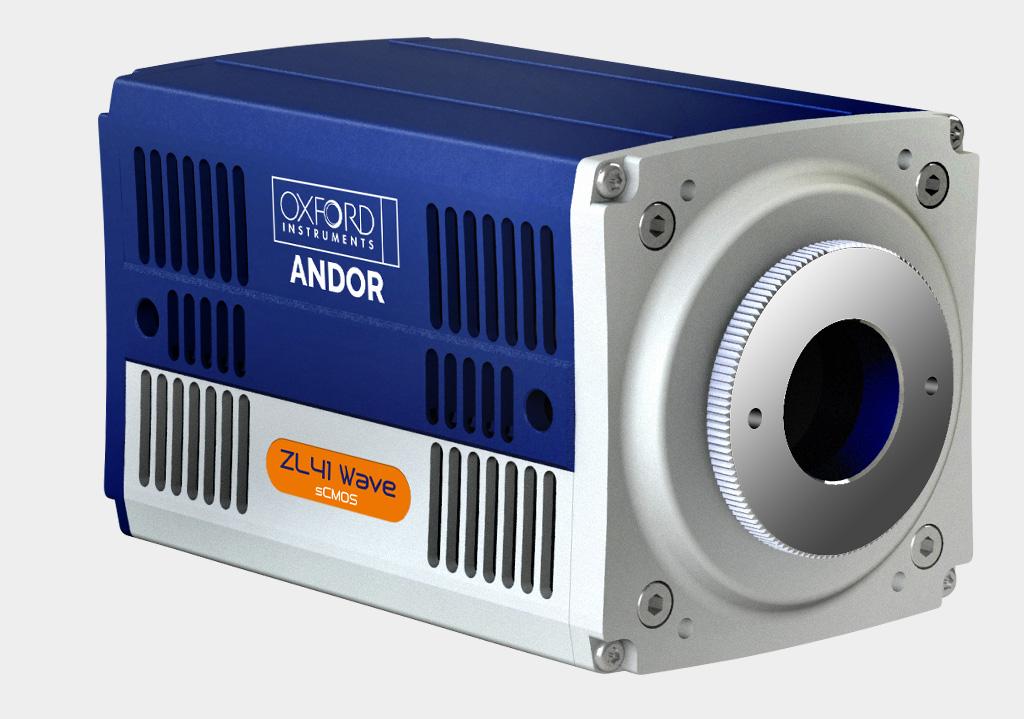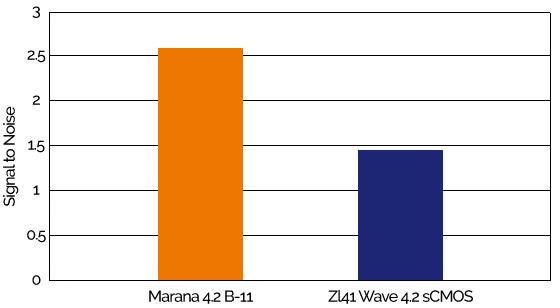Resources
 Part of the Oxford Instruments Group
Part of the Oxford Instruments Group
Expand
Collapse
Andor's Scientific CMOS (sCMOS) cameras series deliver an advanced set of performance features that render them ideal for high fidelity, quantitative scientific measurements. Providing a wide gamut of application advantages across the physical sciences and astronomy, the multi-megapixel cameras offer a large field of view and high resolution, without compromising noise, dynamic range or frame rate.
NEW CB2 Series | sCMOS sensors tailored for astrophysicists | High Speed, Low noise, Global shutter
Andor offers a complete range of sCMOS cameras, spanning a wide envelop of performance attributes. Whether your application requires a large field of view, ultimate sCMOS sensitivity, highest speed capability, high resolution, nanosecond shuttering, X-ray or Neutron detection, or even a compact and light design, you can be confident that we can guide you towards the optimal solution.





Please view our selection of sCMOS cameras below. You can use the drop-down to find a camera suitable for your application.
| Model | Marana | ZL41 Wave | iStar | Zyla HF | CB2 High res | CB2 High speed | CB2 UV |
| Sensor Format | 2048 x 2048 | 2048 x 2048 2560 x 2160 |
2560 x 2160 | 2560 x 2160 | 5328 x 4608 | 3216 x 2232 1608 x 1104 816 x 624 |
2848 x 2848 |
| Sensor Diagonal (mm) | 31.9 | 18.8 - 31.9 | Ǿ18/25mm intensifiers | 21.8 | 19.3 | 17.6 | 17.6 | 9.2 7.1 | 1.7 | 0.5 MP |
11.2 |
| Pixel Size (µm) | 6.5 - 11 | 6.5 | 6.5 | 6.5 | 2.74 5.48 with 2x2 on-chip binning |
9 for CB2 0.5F & CB2 1.7F 4.5 and 9 with 2x2 on-chip binning for CB2 7.1F |
2.74 5.48 with 2x2 on-chip binning |
| QE max (%) | 95 | 64 - 82 | Up to 50% (Gen3 intensifier) | 64 | 74 | 74 | >50 at 300nm (UV) & >70 at 500nm (visible) |
| QE Profile Options | BV, BU | FI | Intensifier dependent | FI | N/A | N/A | N/A |
| Cooling (°C) | -45 | -5 | 0 | -5 | -5 (air) -40 (liquid - water 5°C) |
-5 (air) -40 (liquid - water 5°C) |
-5 (air) -40 (liquid - water 5°C) |
| Exposure (Shutter) Modes | Rolling | Rolling and Global | Global | Rolling and Global | Global | Global | Global |
| Max. Frame Rate (fps, full array) | 48 - 135 | 100 (CameraLink) 40 - 53 (USB 3.0) |
50 |
100 (CameraLink) 40 (USB 3.0) |
106 (CXP) 48 (GigE) (8-bit) |
207 | 662 | 1594 (CXP) 169 | 662 | 1564 (GigE) (8-bit) |
194 (CXP) 140 (GigE) (8-bit) |
| Read Noise Median (e-) | 1.0 - 1.6 |
0.9 (Rolling) 2.3 (Global) |
2.3 (< 1 with Gain) |
0.9 (Rolling) 2.3 (Global) |
1.4 e- | 1.4 | 2.6 | 2.6 7.1 | 1.7 | 0.5 MP |
1.6 |
| Pixel Well Depth (e-) | 55,000 - 85,000 | 30,000 | 30,000 | 30,000 | 9,500 | 23,000 94,000 94,000 |
9,200 |
| Fast shuttering capability | N/A | N/A | Yes (< 2 ns) | N/A | N/A | N/A | N/A |
| Indirect X-ray & Neutron detection | Lens coupled | Lens coupled | N/A | Fiber-optic coupled | Lens coupled | Lens coupled | Lens coupled |
| Interface | USB 3.0 (4 Lane CXP-6) |
USB 3.0 Camera Link |
USB 3.0 |
USB 3.0 Camera Link |
CoaXPress 2.0 / High speed SFP+ 10 GigE interface with Ethernet or Fiber | CoaXPress 2.0 / High speed SFP+ 10 GigE interface with Ethernet or Fiber | CoaXPress 2.0 / High speed SFP+ 10 GigE interface with Ethernet or Fiber |
| Learn More | Specifications | Specifications | Specifications | Specifications | Specifications | Specifications | Specifications |
| Request Pricing | Get Pricing | Get Pricing | Get Pricing | Get Pricing | Get Pricing | Get Pricing | Get Pricing |
The Marana models contain a back-illuminated sCMOS sensor with up to 95% QE, complemented by market-leading vacuum cooling of the sensor for lowest noise floor. The Marana 4.2B-11 model features larger 11 µm pixels, optimal for maximum photon capture in light starved applications. The Marana 4.2B-6 has a new Low Noise Mode that reduces read noise down to only 1.0 e-.


Comparative Signal to Noise under low light conditions (10 incident photons per 100 µm2 sensor area) - Under identical low light optical conditions, the Marana 4.2B-11 with back-illumination and large pixel size is well suited to maximizing photon capture and Signal to Noise.
Andor sCMOS cameras each offer an Extended Dynamic Range functionality, supported by a 16-bit data range. Harnessing an innovative ‘multi-amplifier’ sensor architecture, we can access the maximum pixel well depth AND the lowest noise simultaneously, ensuring that we can quantify extremely weak and relatively bright signal regions in one snap. In the physical sciences, high dynamic range capability is central to countless measurement types, such as in astronomical photometry.

| Model | Well Depth (e-) | Dynamic Range |
| Marana 4.2B-11 | 85,000 | 53,000:1 |
| Marana 4.2B-6 | 55,000 | 34,375:1 |
| ZL41 Wave 4.2 | 30,000 | 33,000:1 |
| ZL41 Wave 5.5 | 30,000 | 33,000:1 |
Measurements taken of a high dynamic range test chart using Marana 4.2B-11 in Extended Dynamic Range Mode, which enables accurate quantification of signal intensities that range from the noise floor detection limit to the full pixel well depth.
Furthermore, to achieve best in class quantification accuracy, Andor have implemented enhanced on-head intelligence to deliver market-leading linearity of > 99.7%.